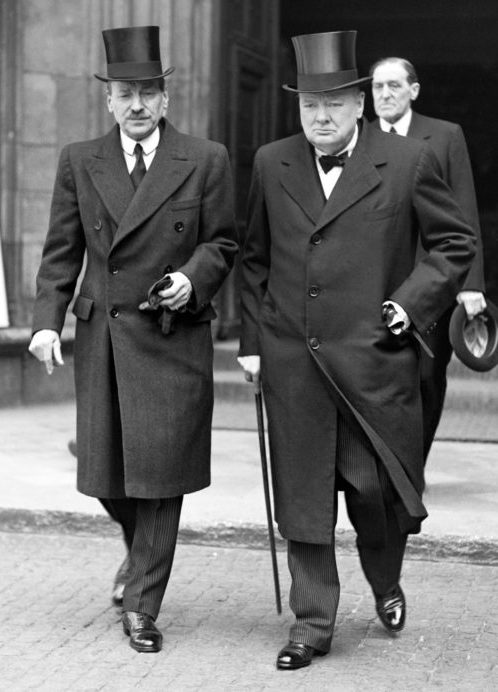To commemorate the 80th anniversary of Victory in Europe from our community’s perspective, we remember with gratitude those OHs, OISCs, Masters and College staff who gave service to their country in this long and arduous conflict, in particular to the 481 of our community who paid the ultimate sacrifice. We highlight a selection of the wonderful stories of OHs who served in WW2, together with a report of life at Haileybury during wartime, using material from the book Haileybury in Two World Wars by Andrew Hambling (Staff 1957-1991, former Head of History, HM of Thomason and Second Master), which was published by the Society in 2002 during his time as Honorary Archivist.
We pay tribute all Haileyburians who have lost their lives in all conflicts in our digital Roll of Honour: https://thehaileyburysociety.org/haileybury-history/the-haileybury-roll-of-honour/ Many of these are also commemorated on the marble tablets in Chapel at Haileybury (all funded by The Haileybury Society over many decades). Those who played for the OHRFC are also commemorated on boards at the clubhouse in Ewell.
OHs who served in WW2
At the outbreak of war OHs flocked into the Services. Many, including those leaving school aged 18, often joined the ranks rather than expecting an officer’s commission as in WW1. Some of those who had served in WW1 had senior positions in WW2 including Wing Commander Harry (Wings) Day (C 1912) who was shot down in November 1939 and became a PoW, Air-Chief Marshal Robert Brooke-Popham (L 1891) was C-i-C in the Far East, Air Vice-Marshall Sir Trafford Leigh Mallory (M 1906) led Fighter Command in south-east England and spearheaded Operation Overlord in 1944, at which Air Vice-Marshal Brian Baker (L 1910) was awarded a CBE for his contribution to its success.
Air Vice Marshal John Slessor (L 1911) was appointed C-in-C Coastal Command in 1943; Air Marshal William Dickson (Hi 1912) served in Fighter Command in Italy. In the Royal Navy Admiral Sir William Wake Walker (M & B 1900) was appointed Third Sea Lord, the most Senior OH Naval Officer and who was responsible for the small boats’ operations off the beaches at Dunkirk in 1940; Admiral Sir Royston ‘Ronnie’ Wright (M 1926) was Commander of Destroyers in the Atlantic, Norway and the Mediterranean. Of those Army leaders promoted to Major-General were Meade Dennis CB CBE DSO MC (H 1907) fought in Sicily with distinction, Eric Rowcroft (C 1905) served in Palestine and France, James Denniston CBE (Tr 1909) and Charles Loewen (Le Bas 1914) battled in Norway and Italy, Lewis Lyne CB DSO (Tr 1913) advanced 3700 miles in 4 weeks across the North African desert, and fought at Salerno and Anzio. All were already highly decorated career servicemen, and received further honours for their service in WW2 and beyond; in contrast to their age and experience but showing equal bravery and determination the youngest OH to receive the MC was Charles Newcomb (M & BF 39), who left Haileybury in 1943 to join the Essex Regiment, and was decorated for his service at Arnhem in 1945 when he was barely 20.
During the late summer of 1940 in the Battle of Britain a group of young Lawrence OHs were amongst those fighter pilots who defended our skies – Peter Townsend (L 1928) (later highly decorated and Equerry to King George VI), Denis Clyde Smith (L 1930), John Reid (L 1931), Keith Lofts (L 1932) and Brian Mortimer-Rose (L 1935). Numerous OHs told their war time stories to The Haileyburian – Captain Peter Langley-Smith, RN (H 1933) wrote of his early naval service under fellow OH ‘Ronnie’ Wright (M 1922), Henry Vollmer (Tr 1928) flew with Bomber Command and received a direct hit; unhurt except for two twisted fingers he spent the next 5 years in various PoW camps, Derek Ridler (Tr 30) wrote of his experiences in Italy for which he received an MC, John Whitley (C 1935) told of being shot down in enemy territory and his 42 day return to England, Michael Rouse (L 1935) was in the first landing craft to enter Rangoon and William Marley (Le Bas 1924) witnessed the surrender of Japan whilst on the USS Missouri.
Many OHs lost their lives in action during the first part of the war, the first three reported very early on in 1939 were Martin McPherson (Th 1916) (lost at sea), John Haigh (M 1927) (in a flying accident) and John Blackwood (Tr 1931) (shot down over Germany). News of the deaths of many OHs during the war years was greeted sombrely at school – the list seemingly endless and from so many diverse places so far away. To name but a few representative of so many for their dedication and bravery – Charles Beath (L 1927) died at Dunkirk, Major Hubert Bourne (L 1916) was killed in Malaya, Frank Kendall (L 1919) in North Africa, William Peters (E 1933) went down on HMS Barham, John Womersley (BF 1933) was lost when ‘The Prince of Wales’ was sunk by the Japanese, Edward Rose (L 1935) was shot down in Malta, Brigadier Norman Upton (BF 11) was killed in Burma ‘due to his own self-sacrifice for others’, Stephen Haggard (H 1924), a successful actor, playwright, poet and author with two young sons died in the Middle East, John Shephard (M 1935), former Captain of Cricket at school, was killed leading a charge on a Japanese position, Clifford Jocelyne (C 1927) was killed in Burma, Rex Whistler (Hi 1919) the renowned artist and designer, was killed near Caen in 1944.
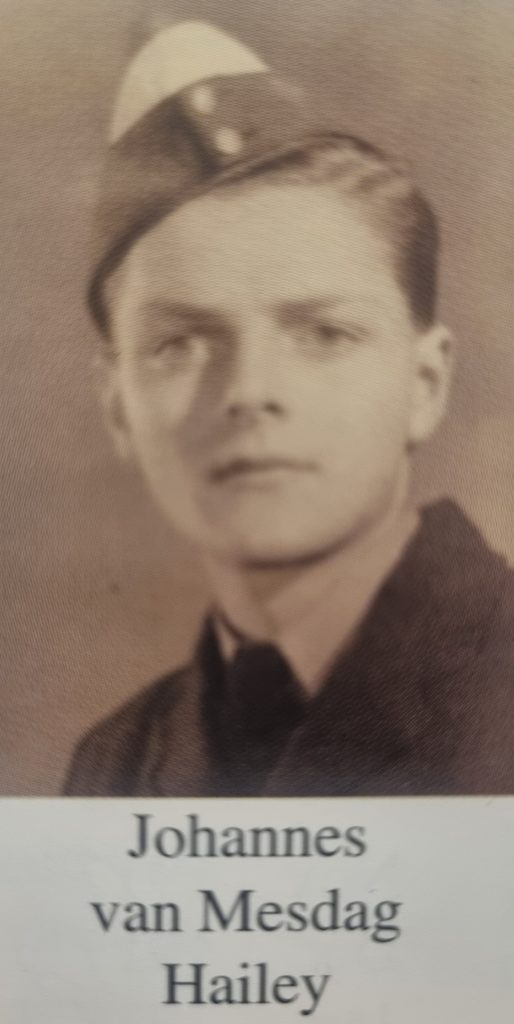
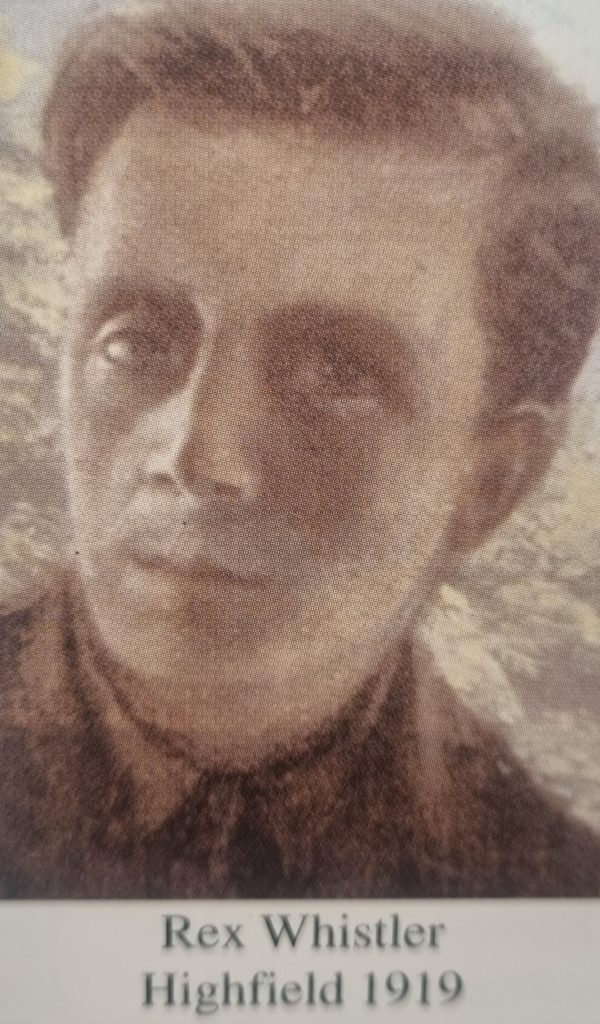
OH Prisoners of War
Over 100 serving OHs were taken prisoner in Europe and spent much of the war held captive in the notorious camps. Around 36 OHs were incarcerated in Japan and the Far East. Charles Wells (Hi 1931) told of rife diphtheria, malaria, dysentery, typhus, scabies, ulcers and malnutrition, Frank Bell (E 1930) set up a ‘university’ to teach languages, Peter Hartley (Th 1932) wrote of being torpedoed and picked up by a Japanese tanker, spending two days on a steel deck which was too hot to stand on by day and freezing by night, with no food or clothing. Group Captain Harry (Wings) Day (C 12) made six escape attempts from various camps and was considered ‘a particularly dangerous prisoner’ by his German captors. Yet a sense of community spirit prevailed – there was even an OH dinner in Laufen camp in 1941 attended by 10 OHs of different Regiments, different Houses and ages.
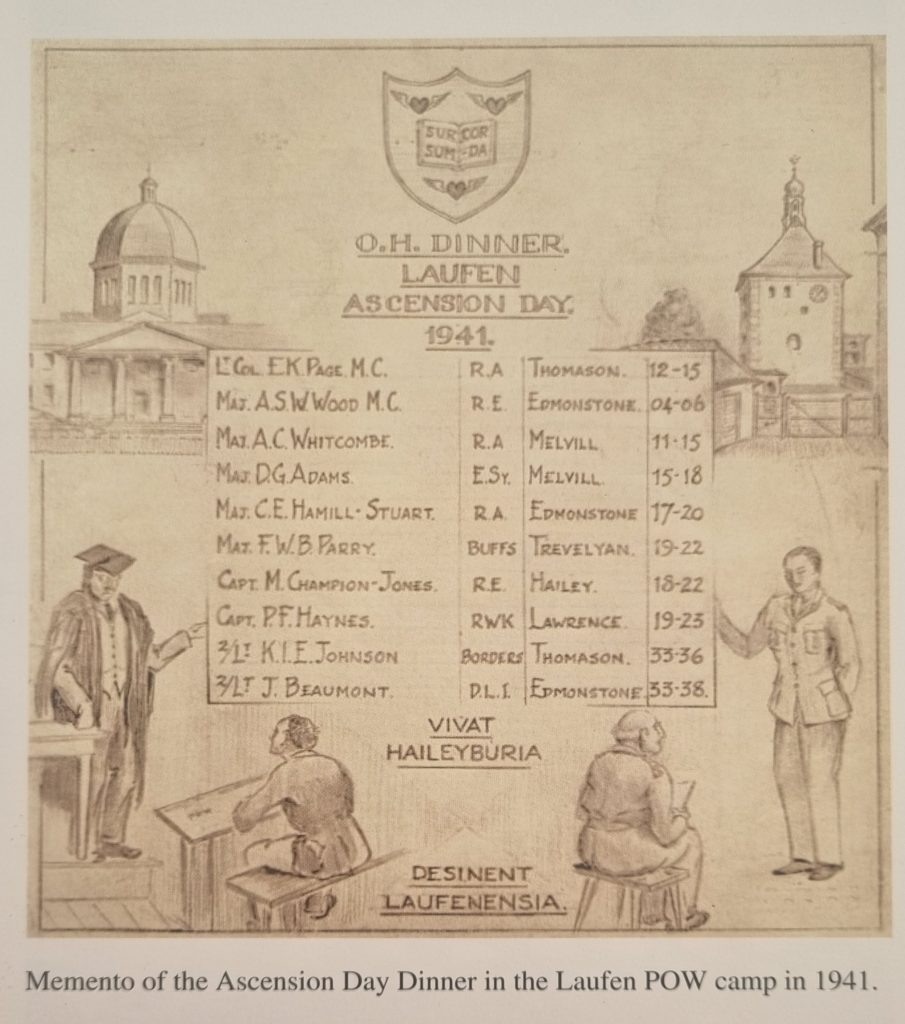
On the political stage Earl Clement Attlee (L 1896) was appointed Lord Privy Seal and a member of the war cabinet, and became Deputy Prime Minister in 1942, then elected Prime Minister in 1945 after the war. A shrewd politician and significant figure in war time, he guided post-war UK through social reform including the nationalisation of the railways, coal mines and road services and presided over the establishment of the NHS in 1948. Christopher Mayhew (M 1929) was his PPS. Geoffrey Lawrence (Tr 1894), former President of Haileybury Council, was Lord Justice of the Court of Appeals and then appointed Presiding Judge on the International Military Tribunal at Nurenberg. Clement Attlee was a proud OH and a regular visitor to his alma mater.
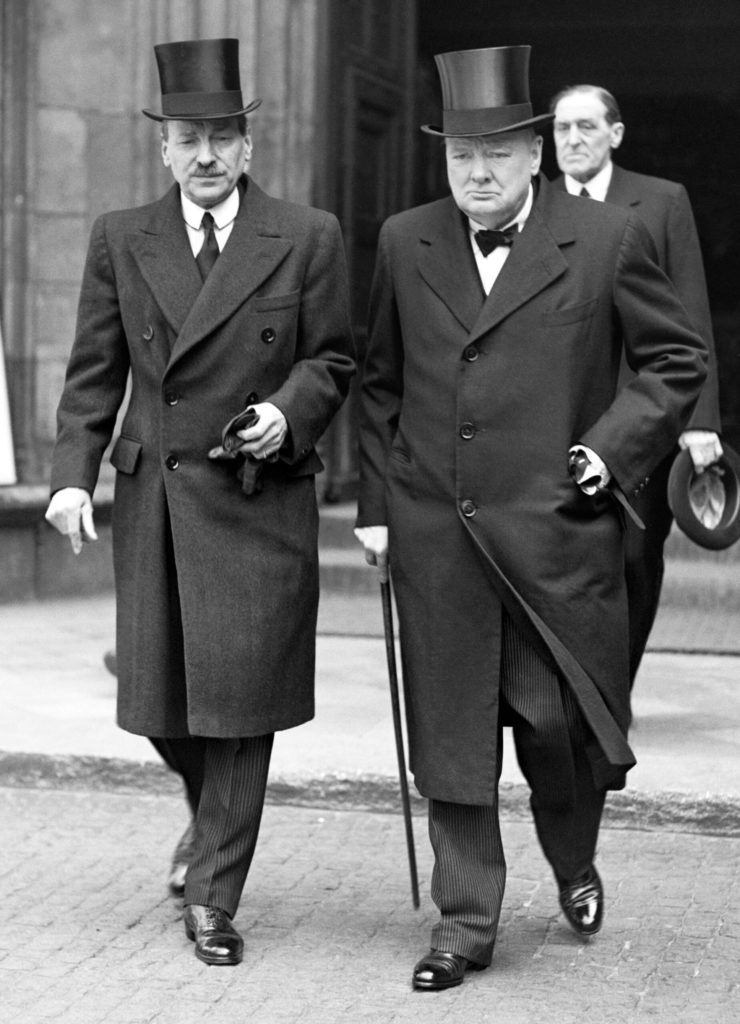
War-time life at Haileybury
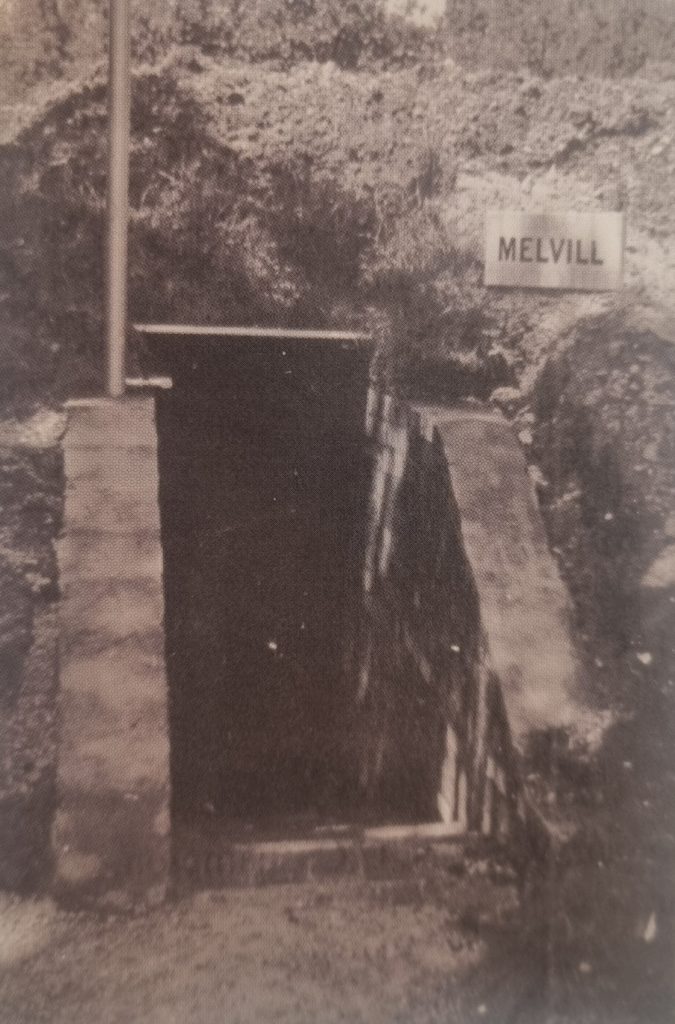
During 1938 & 1939 Haileybury prepared for war by setting up a First Aid squad and a Fire-watching party, the school’s 3000 windows were blackened, and Air Raid shelters on the road to what is now the Art School and on the site of the then Memorial studies behind Thomason were built. More ‘Beaks’ signed up and wartime staff were appointed including several recalled from retirement, notably the former Master Fredrick Malim (The Master 1912-1921) and sportsman and OH Sam Toyne (E 1895) who had taught at Haileybury before his appointment as Headmaster of St Peter’s York. An LDV unit (later called the Home Guard) was formed at Haileybury of teaching staff, college servants and senior pupils. News of those away at war filtered through slowly and was reported discreetly in each term’s edition of The Haileyburian.
Clive Robinson (Tr 36) recalled that they slept with their rifles and bayonets in the long dormitories, with ammunition to be issued only in an emergency. Cornie Thorne (Tr 1937) recalled strong points built on Hailey Lane and at the end of XX acre; windows were netted, and sand buckets appeared all over the school as incendiary bombs fell in the local area. Boys in top floor boarding house dormitories slept fully dressed in classrooms and younger Batten boys recalled being cared for by John Drinkall (B 1936) who was Head of School in 1940. An excellent sportsman involving any game with a racket, John went on to a long career in Foreign Services including as Ambassador to Afghanistan and Haiti, and High Commissioner in Jamaica. He is also remembered on an inscribed marble tablet in the Haileybury Chapel. Richard Harrison (Tr 1937) kept a journal in the Autumn Term of 1940 which catalogues the terror felt within the school with almost daily reports of violent gunfire, shrapnel in Quad, planes over XX acre, windows broken on Terrace, violent explosions on Hertford Heath, a landmine on Hoddesdon and bombs falling down Hailey Lane. It was even rumoured that an OH overrunning a Luftwaffe station had found an aerial photograph of Haileybury with a note not to bomb it directly as the paths across Quad served enemy bomber-pilots with a compass direction. In August 1940 the KBM block was requisitioned as a hospital and each House grew its own potatoes on XX acre, behind the Science Labs, near the Rackets Court and the Art School. 40 boys were taught by the Women’s Land Army how to drive a tractor. Boys sent parcels of food, books and cigarettes to twelve OHs prisoners who spent their war in the notorious Oflag VII via Cecil Pheysey (E 1910) who lived in Portugal, a neutral territory.
In May 1942 Haileybury and the Imperial Service College at Windsor merged at Haileybury. School numbers improved from 374 to 480 and with mutual goodwill and forbearance the fusion was a great success despite initial hostility from some of the boys. The amalgamated school received its new coat of arms in 1943 with the ISC motto ‘Fear God, Honour the King’. That year an influenza bug rendered more than 200 boys unwell, cared for by prefects and rabbit pie made a regular appearance on the menu in Dining Hall. A highlight of war time school life came in 1944 when Haileybury, coached by Colin Cobb (Former Staff 1940-1984, HM Colvin), won the Public Schools rugby tournament. A sole young teacher amongst those much older members of Common Room and unable to join the services due to a car accident, Colin Cobb was remembered with great affection by the boys in his care.
The end of hostilities
On May 7th, 1945, the German surrender was broadcast to the nation just before Prep at Haileybury, where the pupils erupted into Quad in celebration. VE Day began at Haileybury with a service of Thanksgiving in Chapel and the boys had a day off school. Winston Churchill’s broadcast to the nation was relayed in Big School, followed by a singsong and the further broadcast by the King, George VI, then a huge bonfire with German ‘guys’ made by the boys was lit and the Vivat was sung.
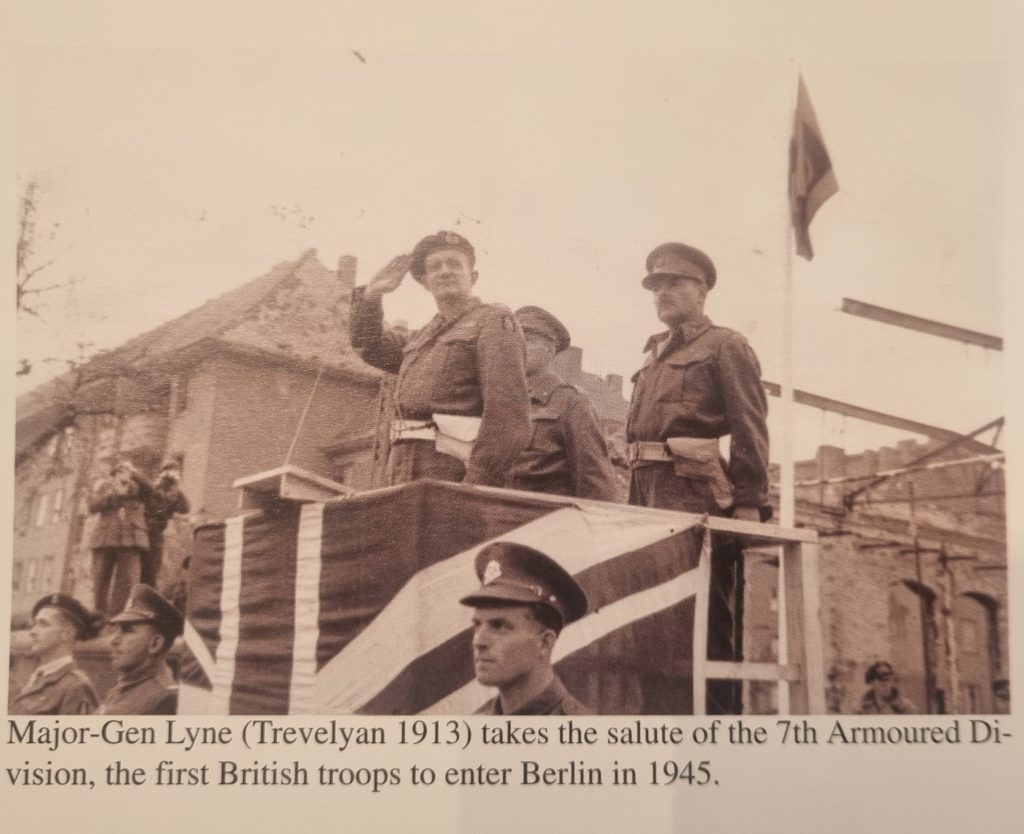
Throughout the war the BBC covered all aspects of the war time life led by the familiar and reassuring voice of Howard Marshall (B 1914), heard on crystal radio sets both in Haileybury house dormitories and the wider world. At the Victory Thanksgiving Service in St Paul’s Cathedral, he described the Service to the nation, which included music composed by Michael Heming (L 1934) who was killed at El Alamein ‘outstanding excellence in the care of his men, never too tired, too cold, or too hungry to do a bit more …. and died very bravely’. His music was also played in Haileybury Chapel on June 30th, 1946, to commemorate the 481 OHs, OHISCs, one Master and four College staff who had lost their lives during the war.
OH war poets
OHs wrote war poetry in both world wars, primarily in WW1 with poets including Clement Attlee (L 1896), Walter Lyon (Tr 1899) (one of five Haileybury brothers, three of whom were killed in action), George Robins, (E 1892) and Robert Beckh (BF 1908).
In WW2 James Rennell (C 1871), the UK ambassador to Rome during WW1, had a book of war poems published in 1940, just a year before his death. Duncan Bulman Tr 1936) wrote a very emotive Sonnet to Haileybury, aged barely 20, whilst serving with the 8th Army in the Western Desert in 1942, which was published in The Haileyburian in 1944 :
Oft, when the noontide pall of desert heat
Brings drowsy numbness to my trivial brain,
I leave behind the sand that clogs my feet
And Haileybury holds me once again:
Then may I walk quiet Mississippi banks,
Where water chuckles between silent pools,
Unravel Heath, or pace th’ arboreal ranks
Of Chestnuts, Guard of Honour to the School;
But always, whatso’er my path of hours
I pause at last on Quad’s southern square,
Close by the books I lived, and standing there
I muse the Chapel domes against the stars …
This faith revives and springs I drank before
Nourish my roots amidst the drought of war.
Postscript and further reading:
Andrew Hambling’s book and other publications relating to the history of Haileybury, all written by members of the Haileybury Society community. All are available to purchase from our online shop: https://thehaileyburysociety.org/store/Haileybury-Books-and-Prints-c15644868
Haileybury in Two World Wars, by Andrew Hambling (Former staff 1956-1991, HM Thomason, Second Master, Honorary Archivist), tells of the ultimate sacrifice paid by over 1,000 Haileyburians in both world wars, together with commentary on the political and social history of the times from a Haileybury perspective
Haileybury 1806-1987,by Imogen Thomas (Honorary Member) is the definitive history of the establishment first of the East India College and then Haileybury, all of which began with the purchase by auction of Hailey Bury (Hailey) House in 1805; this book includes many lovely old photographs.
Haileybury Since Roman Times by Molly Matthews, (wife of HM Edgar Matthews) the story of the land around Haileybury since the Domesday Book
Random Recollections of Haileybury by R. L. Ashcroft (Former Staff 1919-1957, HM Lawrence, Second Master, Life Governor) a glimpse of life at Haileybury in the 1950s
Haileybury Cricket 1963-1992 by David Rimmer (Th 76), an in-depth analysis of Cricket at Haileybury
More from The Haileybury Society
- Haileybury Connections In Uganda

- Now Published – The Haileybury Society Annual Report 2025
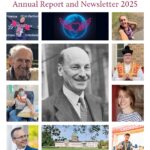
- Haileybury Rackets – A Proud Sporting Heritage

- William Miller (H 65)
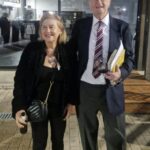
- Annual General Meeting 2025 – A Successful Gathering at the RAF Club
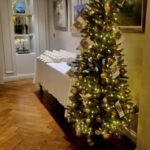
- Christmas Drinks at Lucy Wong’s
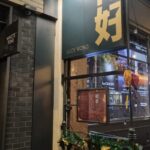
Unless otherwise stated, all content and images on this website and blog © The Haileybury Society, 2024, all rights reserved
Search stories by date
Unless otherwise stated, all content and images on this website and blog © The Haileybury Society, 2024, all rights reserved
